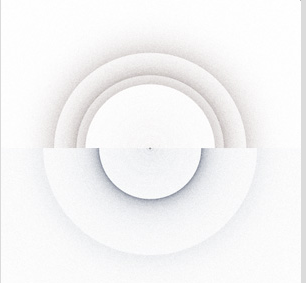Halos on Saturn
Halos on Saturn: A Spectacular Atmospheric Phenomenon
Saturn, the sixth planet from the Sun, is not only known for its stunning rings but also for the mesmerizing halos that surround it. These halos, caused by the interaction of light with various ice crystals in Saturn's atmosphere, create a truly awe-inspiring sight. While the existing content provides a brief introduction to halos on Saturn, let's delve deeper into this fascinating atmospheric phenomenon.
Layers of Saturn's Atmosphere
Similar to Jupiter, Saturn boasts three main cloud layers within its atmosphere. These layers are situated at different depths and exhibit varying atmospheric pressures. The uppermost layer consists of ammonia-ice crystal haze and cirrus clouds, with a pressure of approximately 0.5-1 bar. Just below this layer lies an intermediate level of ammonium hydrosulfide, about 60 km (37 miles) deeper. Further down, approximately 90 km beneath the ammonia layer, are water-ice and water droplet clouds.
Types of Crystals Forming Halos
The halos observed around Saturn are produced by the interaction of sunlight with ice crystals in its atmosphere. Two main types of crystals contribute to the creation of these halos: ammonia-ice crystals and water-ice crystals. Each crystal form produces its own distinct halo pattern. The circular halos formed by ammonia-ice crystals differ from those produced by water-ice crystals, adding to the complexity and beauty of the atmospheric display.
Ammonia-Ice Halos
Ammonia-ice halos are particularly captivating, surrounding the sun as colorful foils against the backdrop of Saturn's majestic rings. These halos result from residual ammonia crystals in the uppermost cloud deck. The bright B ring, located approximately 18,700 miles above the halo, stands out prominently, while the faint and delicate C or 'crepe' ring lies beneath it. The interplay between these halos and the rings creates a mesmerizing celestial spectacle.
Water-Ice Halos
Water-ice halos, on the other hand, form at deeper levels within Saturn's atmosphere. As sunlight interacts with water-ice crystals, it produces its own unique halo patterns. These halos, although not as visually prominent as ammonia-ice halos, add to the overall enchantment of the atmospheric optics surrounding Saturn.
Titan: A Potential Halo Candidate
Saturn's largest moon, Titan, also holds the potential for exhibiting halos within its hazy atmosphere. Predictions based on atmospheric models suggest the presence of methane-ice clouds at Titan's tropopause, located approximately 40 km above its surface. With temperatures around 73 K (-200 Celsius) at this level, the conditions are favorable for the formation of halos. The European Huygens probe's descent through Titan's atmosphere in December 2004 aimed to provide valuable insights into its atmospheric composition and confirm the existence of halos.
Conclusion
Halos on Saturn are a captivating atmospheric phenomenon that adds to the allure of this magnificent planet. With distinct halo patterns formed by different crystal types, such as ammonia-ice and water-ice, the display becomes even more intriguing. As we continue to explore Saturn and its moons, further research and observations will help us unravel the mysteries of these celestial halos and deepen our understanding of the complex atmospheric dynamics at play. So next time you gaze at Saturn in all its splendor, remember to look beyond its rings and appreciate the ethereal beauty of its halos.

Sunrise over Saturn's uppermost ammonia-ice cloud deck. Colourful halos from residual ammonia crystals surround the sun as foils to the far more distant rings marching across the sky. The bright B ring's innermost edge is ~18,700 miles above, beneath it is the faint and tenuous C or 'crepe' ring. The moon at top is Tethys. The painting by meteorologist and artist Jacob Klee is for latitude 26°N Longitude 120°W 1200UT on March 18, 2016. ©2002 Jacob Klee, reproduced with permission.

Circular halos produced by three crystal forms of ammonia (top) and water-ice (below).
Saturn, like Jupiter, is thought to have three main cloud layers. They lie much deeper down in its atmosphere with the pressure already 0.5-1 bar at the uppermost ammonia-ice crystal haze and cirrus layer. An intermediate level of ammonium hydrosulfide is 60 km (37 miles) below that. Water-ice and water droplet clouds are yet another 90 km deeper.
Titan, Saturn's largest moon, could also be a halo candidate. Models of its hazy atmosphere predict methane-ice clouds at its tropopause 40 km above the surface where the temperature is about 73 K
(-200 Celsius).
More about its atmosphere should be learned when the European Huygens probe descends through it in December 2004.
Note: this article has been automatically converted from the old site and may not appear as intended. You can find the original article here.
Reference Atmospheric Optics
If you use any of the definitions, information, or data presented on Atmospheric Optics, please copy the link or reference below to properly credit us as the reference source. Thank you!
-
<a href="https://atoptics.co.uk/blog/halos-on-saturn/">Halos on Saturn</a>
-
"Halos on Saturn". Atmospheric Optics. Accessed on December 23, 2024. https://atoptics.co.uk/blog/halos-on-saturn/.
-
"Halos on Saturn". Atmospheric Optics, https://atoptics.co.uk/blog/halos-on-saturn/. Accessed 23 December, 2024
-
Halos on Saturn. Atmospheric Optics. Retrieved from https://atoptics.co.uk/blog/halos-on-saturn/.